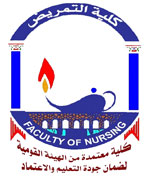Disasters never can be considered routine health care settings throughout the country; the disaster management cycle includes four disaster management phases Mitigation, preparedness, Response, and Recovery. This study aims to explore the medical and paramedical awareness about disasters management.
Subjects and method Study; design is descriptive and carried out at Assiut University Hospital (General Medical and Surgical, Oncology, and Intensive Care) Units. The study subjects consisted of (167) represented from the previous mentioned units as following: (82) nurses, (22) physicians, (11) technicians ,and (52)employees. A self administer questionnaire was developed by the researcher after review the relevant literatures. The questionnaire consisted of 12 parts .Results: the highest men scores among study subjects for the precautions to prevent occurrence of fire in the hospital and lack of medical gases reserves (29.52 ± 17.72; 33.18 ± 19.96; 30.63 ± 11.63; and 24.06 ± 15.11) respectively. While, radiation leakage reserves were highest men scores among physicians and technicians (28.00 ± 11.10 and 24.09 ± 15.61) respectively. Conclusions based on the study results there are highly statistically significant differences in all items of disaster management plan among study subjects in the studied hospital (p ≤0.05 & p ≤0.001). Recommendations: for Management Establish a permanent disaster management line function assigned to a senior personnel in the hospital with full time responsibilities for disaster planning and management. Personnel:-Delegate disaster manager to have authority to essential personnel. Disciplinary action to be taken against staff who neglects their duties or training related to disasters. Communication infrastructure: Dedicated disaster hotline should be established at all coordinating facilities and availability to direct access to any appropriate level within the department facilities: Facilities should be designed, identified and built with hazards in concern and standby, and give more commitment to the preparedness of frontline health care professionals. Minimum standards for disaster preparedness of hospitals need to be determined.
Research Department
Research Journal
AAMJ
Research Member
Research Publisher
NULL
Research Rank
2
Research Vol
Vol , (10) No , (3)
Research Website
www.aamj.eg.net
Research Year
2012
Research_Pages
67-93
Research Abstract

